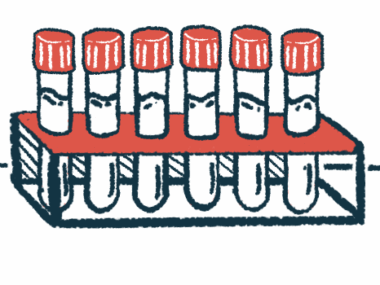Spinraza has few side effects in SMA children, teens: Meta-analysis
Biogen treatment first DMT approved to treat underlying cause of SMA
Written by |

Spinraza (nusinersen) carries relatively few side effects and nearly halves the odds of children and adolescents with spinal muscular atrophy (SMA) having serious or fatal side effects compared with a placebo, according to a meta-analysis.
The study, “Adverse events in the treatment of spinal muscular atrophy in children and adolescents with nusinersen: A systematic review and meta-analysis,” was published in Frontiers in Pediatrics.
Most types of SMA are caused by mutations in the SMN1 gene, which provides instructions for making the SMN protein. Due to mutations in SMN1, little or no SMN protein is produced, which is essential for the health of motor neurons, the nerve cells that send signals from the brain and spinal cord to muscles. Without SMN, motor neurons eventually die, resulting in problems with motor function and with speaking, swallowing, and breathing.
A second gene, SMN2, works as a backup for SMN1, but a slight difference in its DNA sequence results in a shorter protein being produced. This limits the amount of working SMN to only 10%-15%.
Biogen’s Spinraza was the first disease-modifying therapy approved to treat the underlying cause of SMA. It works by binding to the SMN2 gene and enabling it to make enough full-length SMN.
Spinraza is administered directly into the spinal canal, through a process called intrathecal injection. Patients first receive an initial loading period of four doses, with the first three given every 14 days and the fourth 30 days later. Then they move to maintenance treatment wherein the therapy is given once every four months, or three times each year.
Side effects with Spinraza
Like many other medications, Spinraza can cause side effects. Some of the most common ones reported in clinical trials include headache, back pain, and vomiting. Sometimes, these can be a result of the method by which it’s administered and not by the therapy itself.
To get a better overview of the side effects of Spinraza in children and adolescents, researchers combined data from 15 studies (four randomized controlled trials, 11 case series) identified through a literature search up to December 2022.
The studies included 967 patients with a diagnosis of SMA. Side effects occurred in 83.51% of all patients, but most weren’t directly related to Spinraza, but to the disease or its complications. Serious side effects occurred in 33.04% of all patients.
Fewer Spinraza-treated patients had side effects than those who received a placebo. In fact, Spinraza was significantly associated with a lower incidence of serious or fatal side effects.
Side effects directly related to Spinraza occurred in 0.57% of patients. The most common were fever (40.07%), upper respiratory tract infection (39.94%), and pneumonia, which is an infection of the lungs (26.62%). The rate of side effects probably related to treatment was higher at 7.76%.
The researchers concluded that the medication is “an effective and safe drug for SMA management, causing few directly drug-related adverse events.” Moreover, it may “reduce the incidence of general, serious, and fatal adverse events in SMA and its associated complications in children.”







